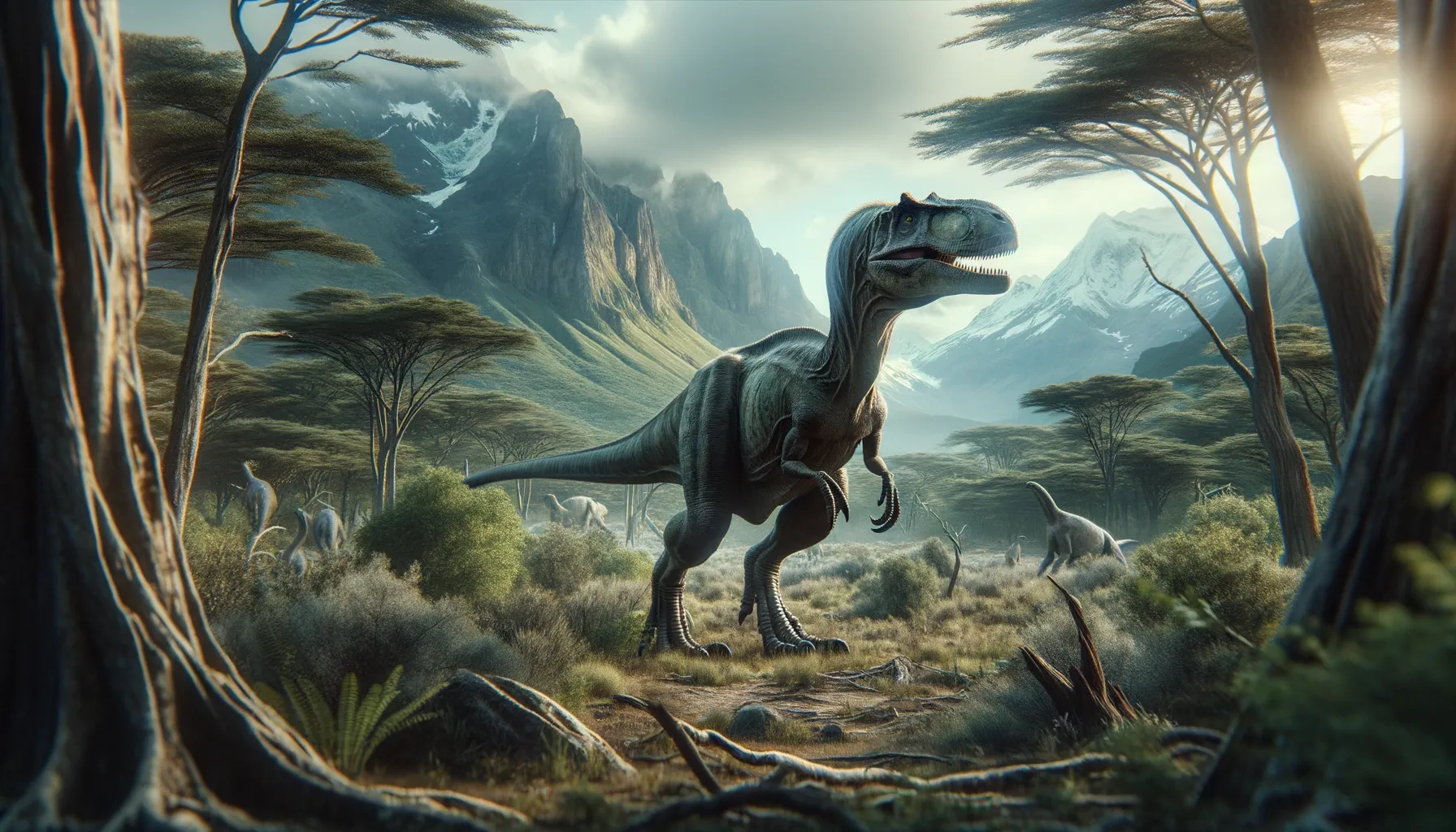
Megaraptor
Swift predator of the ancient world.
Period
Cretaceous
Length
Roughly 8-9 meters long.
Height
Approximately 2.5 meters at the hip.
Weight
Estimated around 1,000 kilograms.
Megaraptor was a large theropod dinosaur known for its size and agility. Discovered initially in Argentina, it roamed the earth during the Late Cretaceous period. It is distinguished by its large claws and robust build, suggesting it was an efficient predator. Studies have revamped our understanding of its physical traits overtime. The fossil record provides tantalizing clues to this dinosaur’s role in its ecosystem, though much remains to be uncovered.
Diet
Megaraptor was a carnivore, feeding primarily on other dinosaurs. Its long claws and sharp teeth helped it effectively hunt and process its prey. There is ongoing research to further understand the variety in its diet.
Hunting
It likely hunted smaller or similarly-sized dinosaurs using its speed and strong forelimbs. The large claws on its hands were possibly used to grasp and slash prey, aiding in subduing them effectively. Pack behavior is speculated but not yet confirmed.
Environmental challenges
The shifting climates and sea levels during the Cretaceous presented constant challenges. Megaraptors had to adapt to changes in prey availability and vegetation. Competition with other predators also shaped its hunting strategies and survival tactics.
Speed
Estimated to be fast, agile predator.
Lifespan
Likely between 20 and 30 years.
First discovery
First discovered in Patagonia, Argentina in 1996.
Fun Facts
- Megaraptor lived during the Late Cretaceous period, around 90 million years ago.
- Despite its name, Megaraptor was not a true raptor like Velociraptor; it belongs to a different group of theropods.
- This dinosaur got its name 'Megaraptor' because of its large claws, which were initially mistaken for being on its feet, but later found to be on its hands.
- Megaraptor was named and described by paleontologist Fernando E. Novas in 1998 after fossils were discovered in Argentina.
- It was a carnivorous dinosaur, believed to be a fast and agile predator, using its long claws to hunt and capture prey.
- Megaraptor might have reached lengths of about 26 feet, making it one of the larger predators of its time.
- Fossils of Megaraptor have been primarily found in Patagonia, Argentina, providing valuable insights into the diversity of predatory dinosaurs in that region.
Growth and Development
Megaraptors likely grew rapidly to reach their formidable size, much like other theropods. Juveniles would have required nutrient-rich diets to sustain growth. The skeletal structure suggests changes in the bone density and muscle attachments as it matured.
Habitat
Lived in a variety of environments, from forests to open plains in the Late Cretaceous. Its fossil discoveries in South America suggest it adapted to diverse habitats. Seasonal changes demanded adaptability for survival among various terrains.
Interaction with other species
Megaraptors were apex predators but competently coexisted with herbivorous dinosaurs, which were their primary food sources. Competing with other carnivores, they had to assert territory for hunting. Fossil evidence indicates possible interactions with small-sized theropods.
Natural lifespan
Its natural lifespan was likely similar to other large theropods, around 20-30 years.
Reproduction
Like other theropods, it most likely laid eggs and engaged in some nest-building behavior. Parental care is speculated as it was common among similar species. Fossils of juveniles provide insight into the growth patterns from hatchling to adult.
Social behaviour
Its social structure remains debated, but some evidence suggests possible pack behavior. Displays of dominance and territory in hunting grounds were vital. Interaction was likely more active during mating seasons.
Fossil locations
Its fossils have primarily been found in Argentina, indicating its presence in South America during the Cretaceous. This highlights its geographical range and ecosystem influence. Newer discoveries continue to enrich its paleogeographical narrative.
